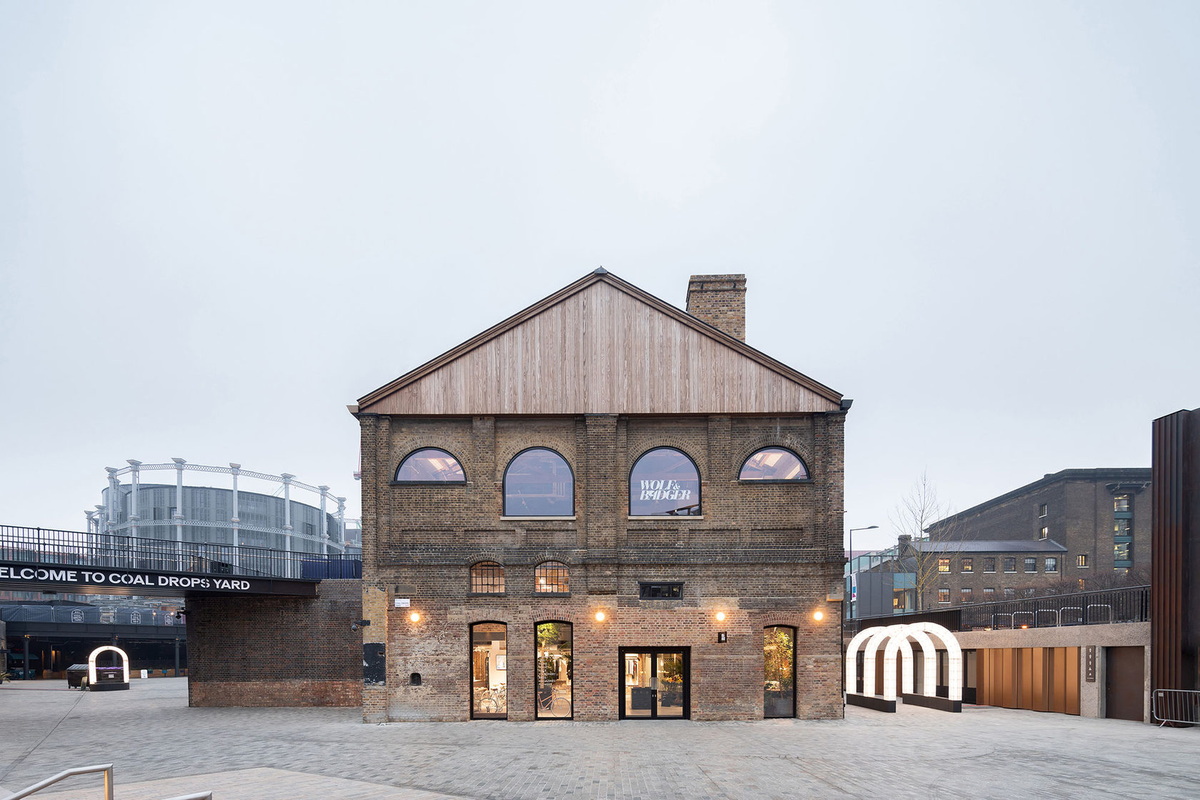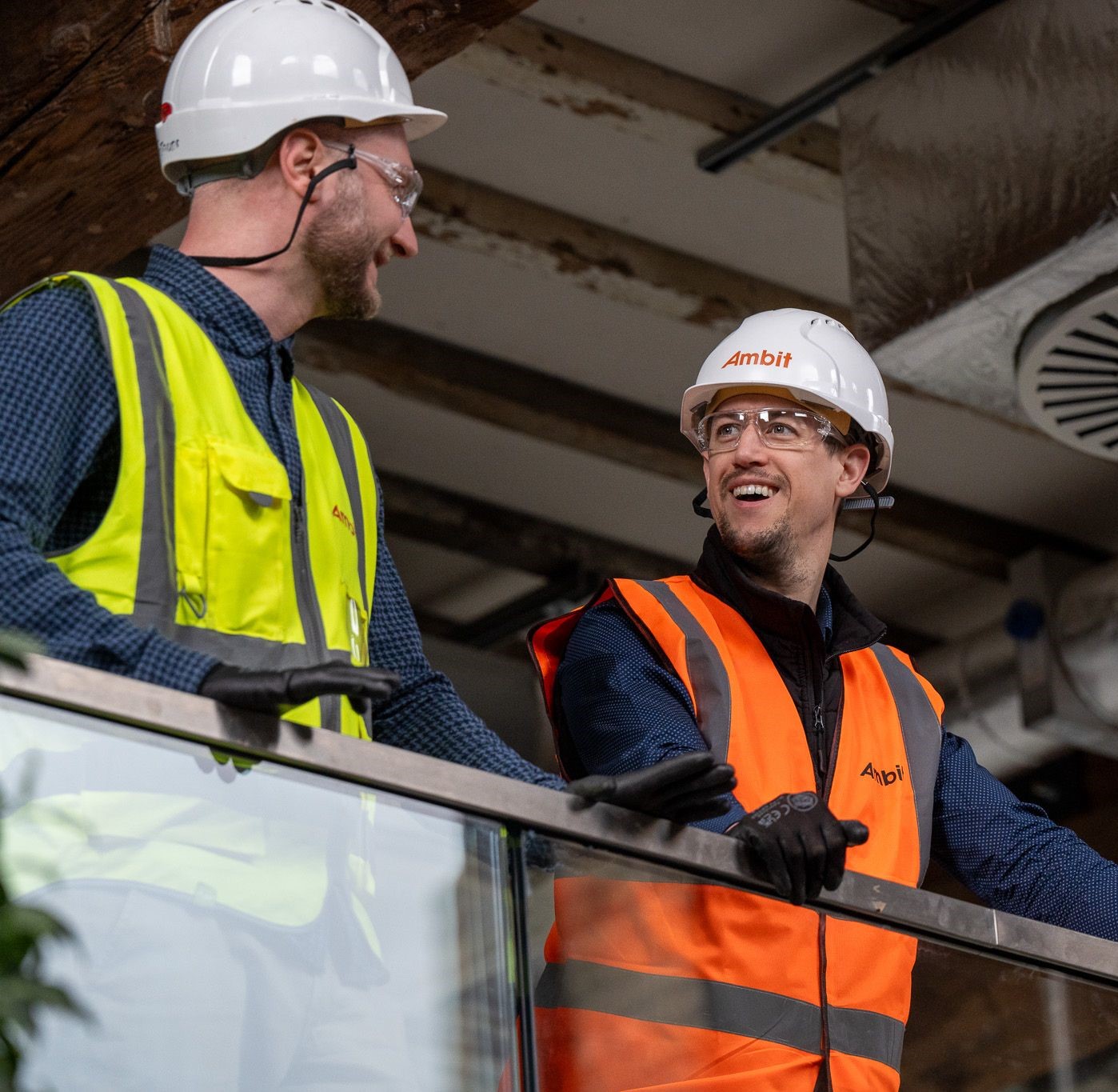Thinking Circular – Steel Reuse and Low Carbon Options
Steel use is becoming more and more prevalent in Ambit projects, with significant structural alterations on Voysey House, Farringdon Road and Eversholt Street; we are transitioning towards our own niche in the market, sitting somewhere between the fit-out contractors and the new build structural contractors.
It is a common conception that BREEAM, WELL, LEED and any of the other seemingly endless quantity of acronym-based certification schemes (over 40 of them in total) prove as merely tick-box exercises which are pulled together at the end of a project to achieve a certificate. And this may be the reality in some instances. However, the market is changing, we are seeing an increase in building owners and developers requiring best-in-class sustainability credentials for their projects. There are multiple reasons for this, but in my opinion, it is led predominantly by increased awareness of climate change and employees’ higher standards of employers for suitable working environments.
A typical steel section has a carbon intensity of 2,500kgCO2/tonne. For context, Ambit’s current Farringdon project has a total of approximately 235 tonnes of steel throughout the scheme, contributing to 587,500kg of carbon. This blog outlines the market’s current solutions to the issues surrounding steel use, and the benefits and limitations of reuse.
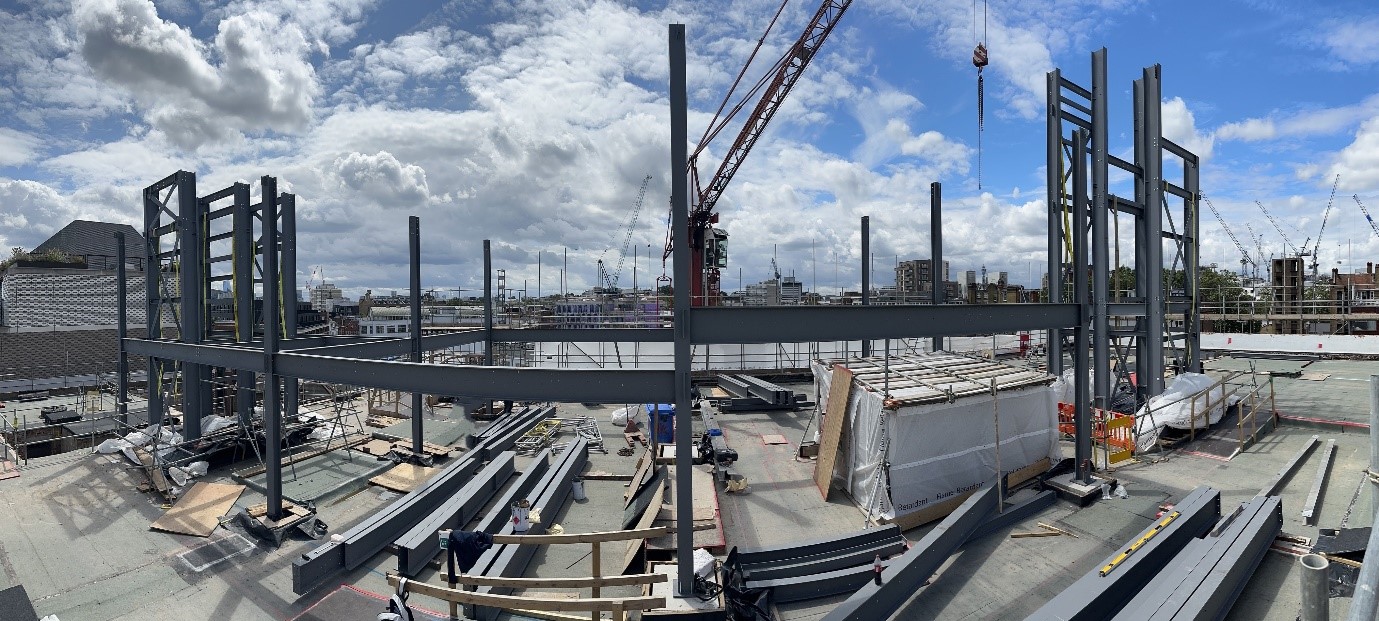
Option A – Use steel made with a high recycled content.
Manufacturing virgin steel using a Basic Oxygen Furnace (BOF) can allow a maximum scrap content of 25%, helping to reduce the carbon intensity down to 2,300kgCO2/tonne. This figure is typical of most manufacturers within the UK and provides a good start to carbon reduction. This method should not require any cost uplift as it is standard industry practice.
The next option would be to use an Electric Arc Furnace (EAF) to increase to 100% recycled content steels. The result would be a reduction in carbon intensity to just 300kg-600kgCO2/tonne. However, we should be aware that there will be significant cost uplift for this solution so early consultation with the client is necessary. It should also be noted that there are no current EAF within the UK that have the capability to produce 100% recycled steel sections (the UK can produce lower grade rebar via EAF however). Instead, we would need to import from mainland Europe, in countries such as Luxemburg.
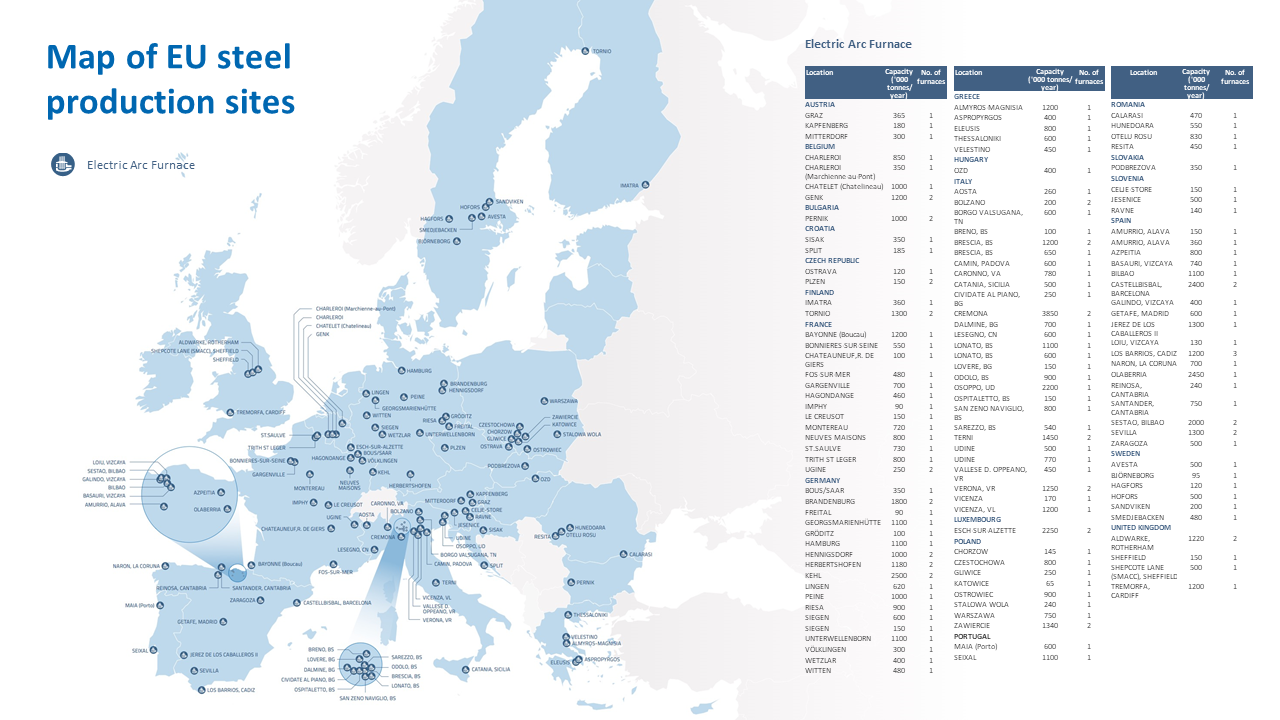
The evidence shows that certificates can add economic value to the landlord and social value to the tenants, but can they also positively impact the main contractors’ ability to build more responsibly?
As a contractor who takes on the project at stage 3 or 4 with little input into the overall design philosophy of a project, more generalist certifications – like those above – do not incentivise a contractor to propose new and innovative changes to the specification. Therefore, building certifications that do not work on a ‘credit’ system can be ticked off, but instead, a scaled approach where performance is not binary. Examples of this would be the NABERS performance standard and carbon assessments, among others. Then, when the end result of these assessments is included as a key performance indicator for the project, it changes the mindset of the main contractor entirely, from one who delivers the bare minimum to one who will become much more engaged in sustainability.
This method of assessment encourages continuous improvement, it allows contractors to make their own mark on a project, interrogate the design, and propose innovative solutions to improve the performance of the building.
It is worth noting here that for this to be successful, the correct reporting and due diligence must be done by the client, as with any certification, there needs to be third-party verification to allow for comparability between projects.
Whilst these options are steps in the right direction, they both come with their limitations. Currently the supply of scrap steel is far outweighed by the demand for new steel (100 million tonnes of scrap within EU with demand at 160 million tonnes). This therefore means that already all our capacity for scrap steel is being recycled, yet we still require another 60 million tonnes of virgin steel to meet the EU demand. Further to this, outsourcing our own production of steel via EAF, would heavily impact steel producing towns such as Teesside and Port Talbot, where a high proportion of the jobs are within these BOF facilities. In fact, the UK steel manufacturing market provides 33,400 jobs to our economy. So, what can we do to ensure our steel is used in the most efficient and least carbon-intensive way?
A move from recycle to reuse.
Option B – Reuse
There is a new philosophy within construction to think of our buildings as material banks. Once they have lived their serviceable lives, they provide us with an opportunity to be ‘mined’ for their resources. Practically speaking, this method of thinking will require a significant shift in construction practices, beginning from project conception – ensuring the building is designed for disassembly, all the way through to a proper handover of a completed building with the necessary material passports.
The difficulty lies in putting this into practice, so we need to first explore a number of questions.
Step 1. What to Reuse?
Similarly to our current process at Ambit, at the outset of a project we survey the soft furnishings prior to strip out, we should also start to review the structural materials within the building which are due for demolition. There are now certifiable methods of testing used steels which allows them to be safely reinstalled in new buildings. Namely, P427 for steel, which was manufactured post 1970, and P440 for steel manufactured post 1932. Understanding the history of the building and the steel is very important and should be our first port of call if there is steel within the demolition scope.
Step 2. Checking Inventories
We are yet to have the inventory available in the market to match large quantities of steel to each project without the use of a donor project (another project with suitable demolition scope running at a similar timeframe). Fortunately, this issue suits Ambit well, as the smaller quantities of steel that we are typically dealing with means we are within the right threshold to procure from the existing stock.
There are two key companies within the UK that will be able to assist us in this process. Namely, EMR and Cleveland Steel.
If there is steel coming out of the building which is deemed in good condition that can be reused, either within the same scheme or sold back to the merchant for reuse, approaching the client as early as possible in this process allows for adequate planning. Making the client clear on the massive carbon benefits is critical to getting it over the line. The carbon intensity of using reused steel is as low as 47kgCO2/tonne3 (a 97.5% reduction from new steel!).
Step 3. Forward Planning
Matching steel stock from the merchant to the project requires detailed planning and input from the structural engineer, the fabricator, the merchant and of course the contractor from an early stage. Assuming the steel is being sourced from the existing stock and not a donor site, the first port of call would be to contact the merchant with the specification of steel (EMR or Cleveland Steel), they can then use their own stockpile to provide a suitable match.
Following these initial steel recommendations, the structural engineer and fabricator will check that they are happy that they will be suitable for its purpose. There may be instances where slight oversizing may be required, in these instances there needs to be flexibility from the structural engineer and design team to accommodate this, so making this clear early is also key to successful implementation. With that being said, it is still very unlikely (depending on size and scope) that we will be able to source 100% reused steels, therefore, there should be a clear cut off date set where we go into fabrication on the low carbon steel option.
As this is an emerging market, new technology is being developed that uses digital technology to track materials coming out of the waste streams, that can then automatically match the materials to the requirements of your own project. One such company is ‘Excess Material Exchange’. As this becomes more ingrained in our thinking and the market grows, the process will become more streamlined and efficient.
Additionally, we would also need to engage with the insurance broker in the process. If all necessary testing has been done as per step 1, this should not impact the premiums in any way as the steel will still receive the required CE marks.
Conclusions
Ambit projects are increasingly seeing structural steel included within the scope of works. Whether we are demolishing existing steel or installing new steel, we need to begin thinking circularly to capitalise on the carbon savings that can be realised. See the below table highlighting the carbon intensity of the different types of steel detailed in this blog.
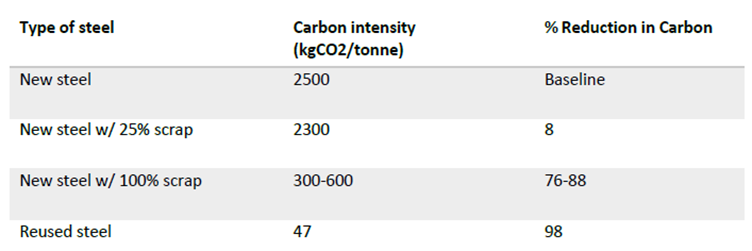
Existing scrap steel supply is far outweighed by the demand for new steel within the UK and the world. The current model is such that almost all steel from demolished buildings is subsequently smelted down and recycled, with very little going into landfill. This therefore means that regardless of all good intentions, holistically speaking, using higher content of recycled steel does not improve global emissions (although it does help with project specific emissions).
But all is not hopeless. This blog demonstrates that by reusing steel and avoiding the recycling process, we can still save a significant amount of carbon emissions. If this is not possible due to potential intricacies in the design or lack of existing stock in the market, we should then set out the next best opportunities that we can take by taking advantage of the new EAF technology within mainland Europe.
It is clear the system is not perfect, but as we become more experienced in the practices and processes it will become ingrained in the operations of our industry and become the new normal. Ambit are keen to get ahead of the curve and begin to explore how we can integrate this way of thinking into our projects going forward.
Please reach out to Matt Robinson if you would like to go through any of the topics above in more detail or for a general discussion around the reuse of steels.

